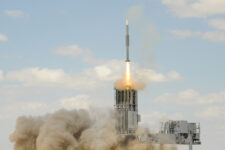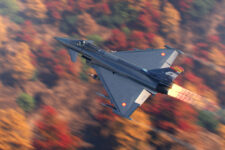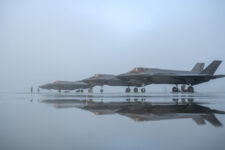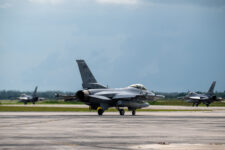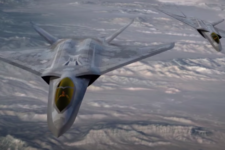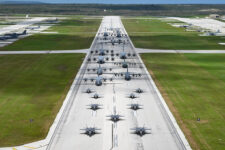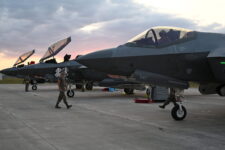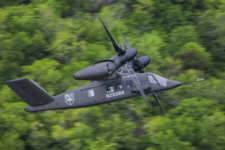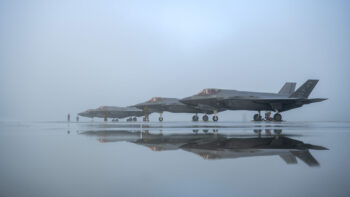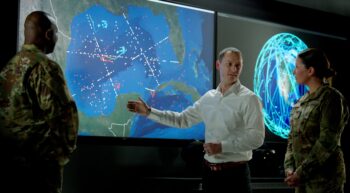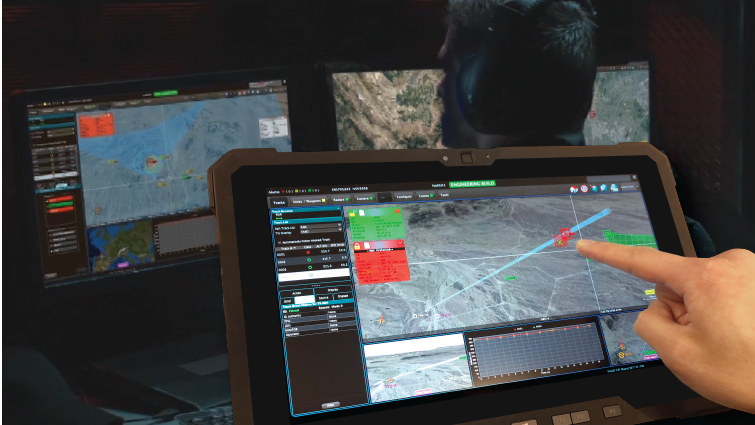
Forward Area Air Defense Command & Control (FAAD-C2) tracks incoming threats from drones, rockets, artillery, and mortars. (Northrop Grumman photo)
WASHINGTON — Since 2020, when the Pentagon established a technical architecture to connect counter-drone systems, their digital backbone has been the Army’s Forward Area Air Defense Command & Control. FAAD-C2 is built by Northrop Grumman and in widespread use by US forces and, increasingly, foreign allies like the Baltic States. Today, Northrop announced it had developed a new AI-driven upgrade to FAAD-C2, an Advanced Battle Manager to help users handle “complex aerial swarm scenarios.”
“The ABM can generate engagement plans in under a quarter of a second,” a Northrop spokesperson told Breaking Defense. “Formal testing has been completed, and [ABM] will be deployed by the US Army shortly.”
The Advanced Battle Manager takes the data FAAD-C2 is already receiving from multiple sensors, analyzes the threat, and then rapidly recommends the best available weapon to engage each target — what’s called “weapon-target pairing” — while avoiding “friendly fire” shootdowns of US and allied assets. It boasts an “open architecture” design, meaning it uses common industry and military technical standards that allow a wide variety of vendors’ weapons and sensors to plug-and-play, rather than being restricted by a closely-held proprietary interface. And, the release says, its algorithms were trained on “years of live fire data” and then “successfully tested in spring and late summer at the Yuma Proving Grounds in Arizona.”
It’s not yet clear if these tests overlapped with June’s multi-week JCO Demo 5, also at Yuma, which pitted an array of defensive systems against up to 50 inbound threats at once, ranging from tiny propeller-driven drones to unmanned mini-jets weighing over half a ton. But that demonstration definitely indicated the kinds of threats the military is worrying about. The Pentagon has long seen air defense in general — not just against drones — as a prime area to deploy artificial intelligence, because threats can come in so fast, from so many different directions, that it can overwhelm a human’s capacity to respond.
“As threats evolve, the need for operations to become simple and clear during high-stress multi-target engagements has increased,” said Northrop Vice President and retired Air Force missile defender Kenneth Todorov, according to the release. “This critical AI enhancement will create a streamlined and intuitive engagement plan giving service members more time to save lives with a single click.”
The terror of war, a helo crash mystery and the business of defense: 5 Middle East stories from 2024
From eye-witness accounts of the Israeli invasion of Lebanon to a rare appearance of Iranian weapons at a foreign arms expo, there’s a selection of Breaking Defense’s Middle East coverage.



